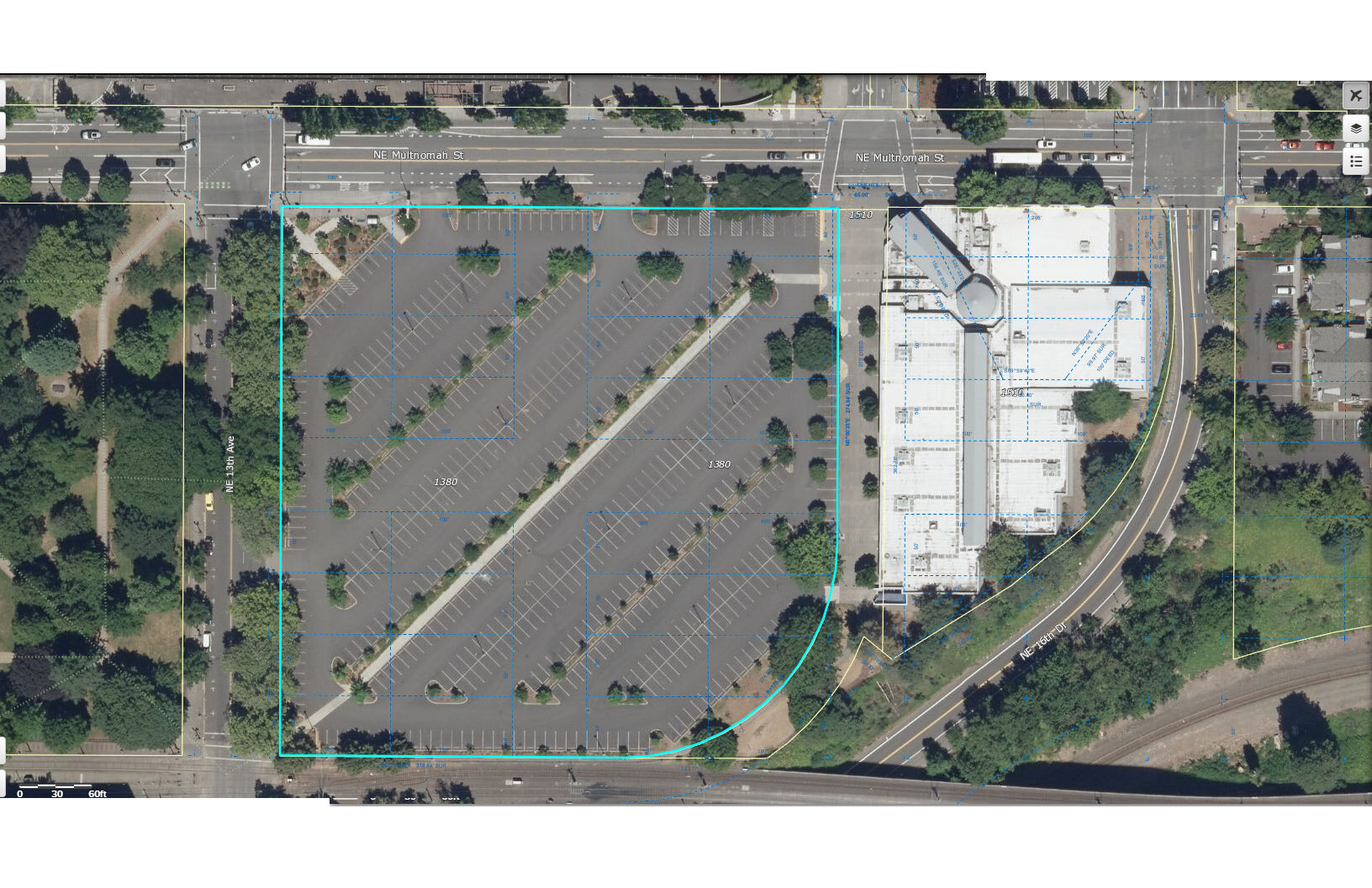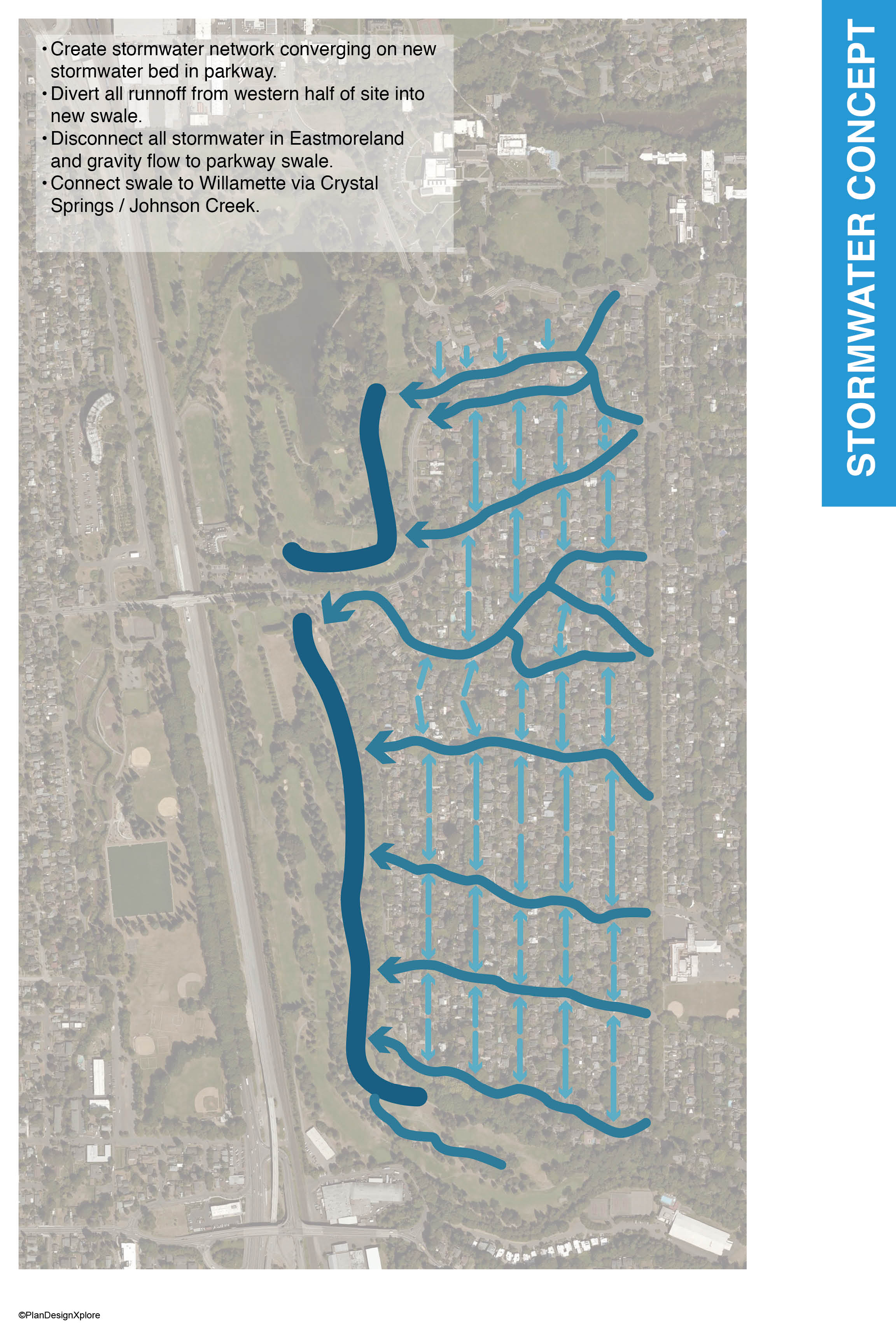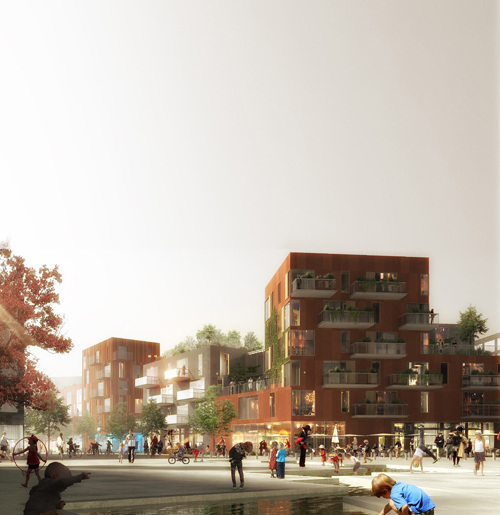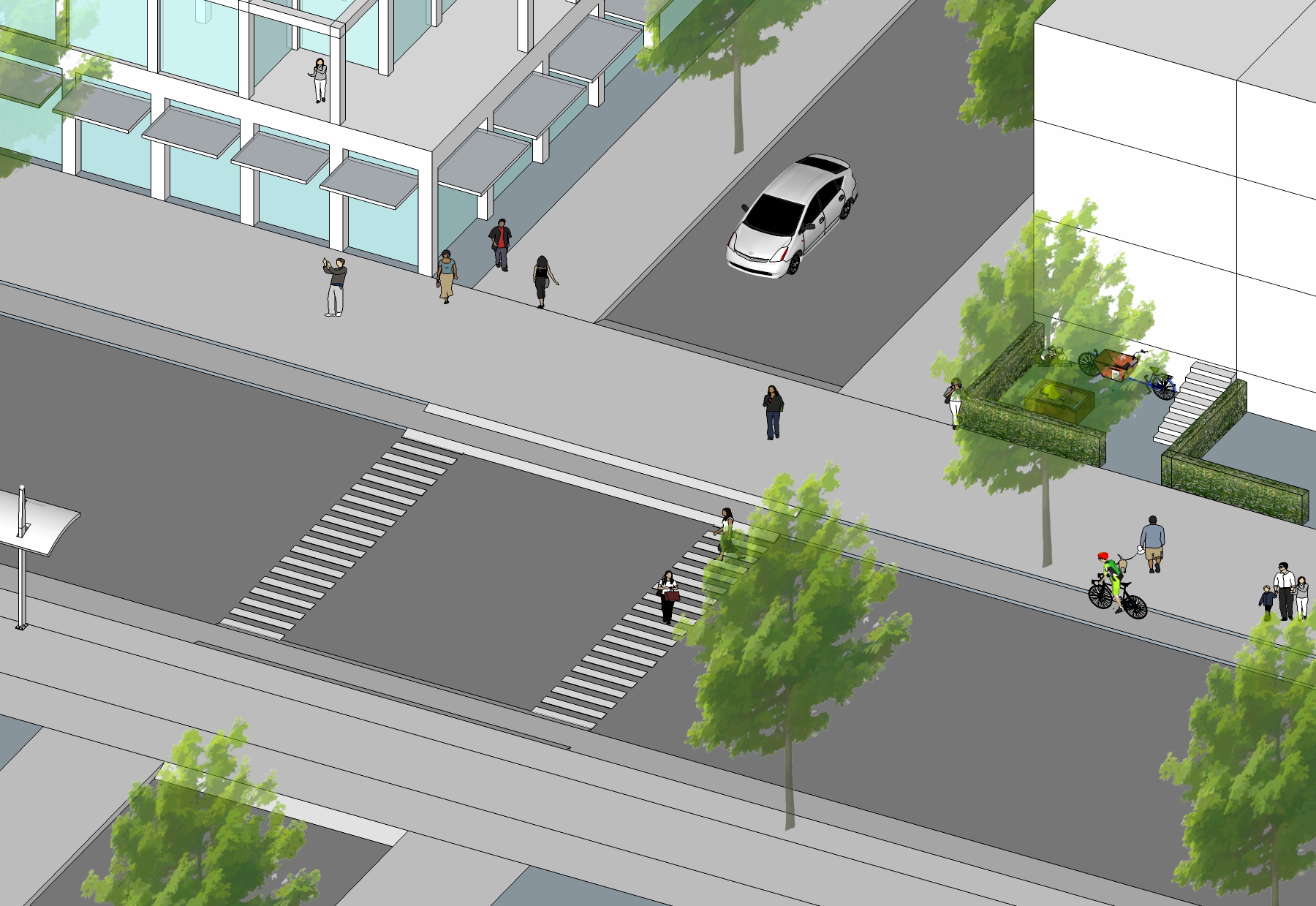After many years in development and millions invested, the proposed mixed use redevelopment of the Lloyd Cinemas parking lot died with a whimper last fall. The abrupt failure of the nearly 700 unit development highlights the inherent risk of these megaprojects.
The fancy renderings presented at a series of design review hearings showed a large instant neighborhood, with meandering internal pathways. Holst did a pretty decent job of making it look as good as possible. The view from the street looked like a whole district, with many buildings, sort of like how we think of a neighborhood. In reality, this was all one colossal development, and the simulacrum of diversity belied a monolithic reality. That becomes clear when one examines the site plan.
What appear to be a group of separate buildings that coalesced organically is actually a group of megastructures and assorted accessory structures. This isn’t to say that we should never allow this to happen. Some master planned projects can create a quality place, when executed skillfully.
This way of building is, however, an anomaly in the history of human habitation. While Popes and Caesars had the power to reshape districts, almost all building in cities has been incremental and small scale in nature. Until the rise of corporate investment banking, only the church and the crown had the power to build this way. The development of Portland was no different. Indeed, the Lloyd district’s own history is one characterized by the volatile and failure-prone nature of megaprojects.
Most of our city was developed on a grid system made up of modules of 50x100 foot lots. It’s far easier for a small local developer to purchase one or two of these and put up a modest building. Indeed, that’s mostly how Portland was built. When lots of parcels are consolidated, only the big national builders, fueled by institutional capital can compete.
This post asks a simple question, why not try a more organic, incremental approach to properties like this? Instead of putting all the eggs in one basket, what could happen if a master developer parceled off a big block like the Lloyd Cinemas site and sold it off in small lots. A developer can buy one, two, or more, according to their ability and ambition. When the minimum buy-in is lower, the initial barrier to entry is reduced and the chances of something happing right now are much higher. For our little experiment, we decided to keep it simple, so we simply resurrected the underlying plat. These are the modules that were consolidated to make the current superblock:
Here’s what that incremental buildout could look like. A few small projects start things off, and as value grows, bigger, more ambitious projects fill out the space resulting in a mix somewhat similar to the southern part of neighboring Sullivan’s Gulch. You might have to play some games with the incentives in order to get some real diversity, like offering incentives to early adopters and small local players. We think it would be worth it though.
Developing this way produces a more organic, adaptable and resilient urban fabric. Individual parts and pieces can turn over on their own lifetimes, and a diverse array of investors and builders on this scale will foster more local participation, rather than sucking out the profits and funneling them out of state. One can imagine the potential of gradually returning the entire district to a human scaled grid resembling what might have developed had the place never been consolidated in the first place. We’re not suggesting this is necessarily the best, or the only way to reurbanize Lloyd and places like it, but we think it deserves serious consideration.


































